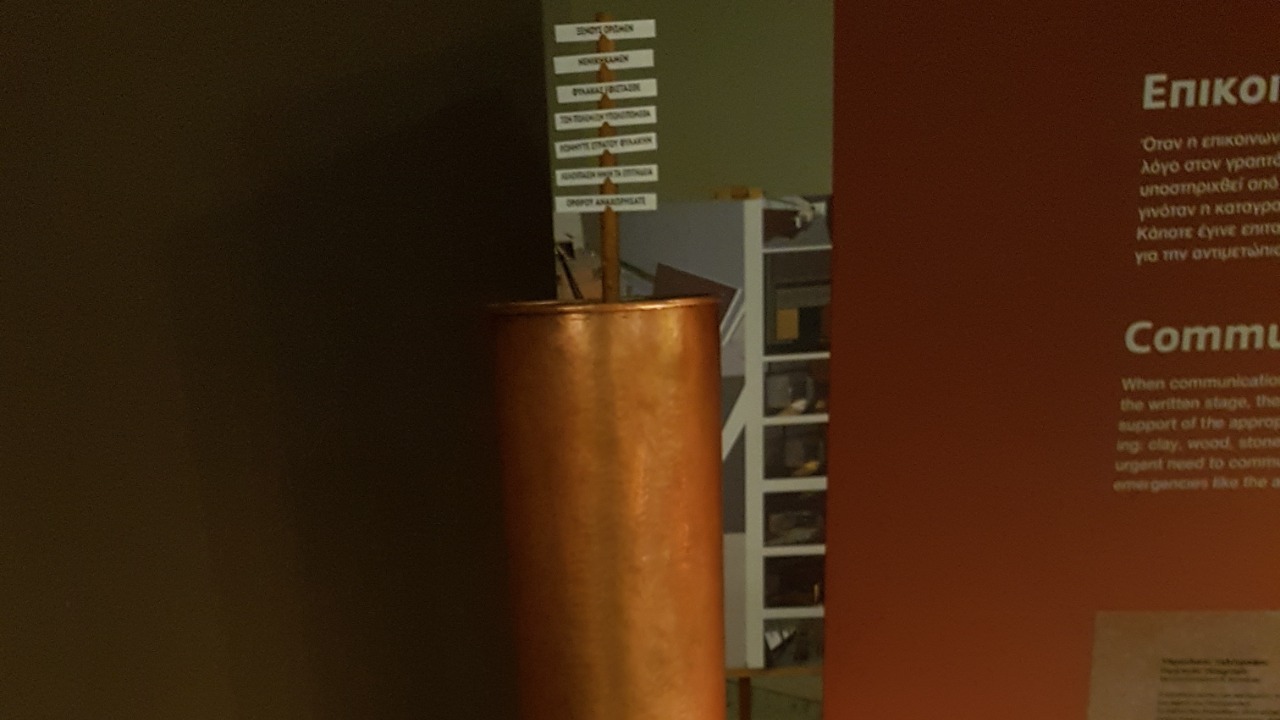
In the 4th century BC, the Greek engineer Aeneas of Stymphalus devised a groundbreaking communication system known as the hydraulic telegraph. This ancient invention utilized synchronized water clocks and torches to transmit messages over vast distances, long before the advent of Samuel Morse’s electric telegraph. By enabling rapid communication of military orders, such as “The attack begins at the second torch,” this device revolutionized the way information was relayed in ancient warfare, as evidenced by archaeological findings in places like the Athenian Agora.
Invention and Mechanics of the Hydraulic Telegraph
The hydraulic telegraph was a marvel of ancient engineering, relying on two identical water clocks filled with equal volumes of water. Each clock featured a siphon and a vertical tube marked with time intervals, ensuring precise synchronization over long distances. The sender would pour water into their clock at a predetermined time and light a torch when the water reached a specific mark. The receiver, upon seeing the torch, would mirror the process to decode the message, which could include numeric codes for letters or direct commands. This system, however, had its limitations. It required clear weather for torch visibility and trained operators to ensure accurate message transmission, as noted in surviving texts from the 3rd century BC.
Historical Context in Ancient Greek Warfare
Aeneas of Stymphalus, a 4th-century BC engineer and tactician from Arcadia, documented the hydraulic telegraph in his treatises *Poliorketika* and *Semeia*. These works, written around 350 BC, provide insight into the device’s use in Greek military operations. Greek city-states like Athens and Sparta employed the hydraulic telegraph to coordinate battles, such as during the Peloponnesian War (431–404 BC). Thucydides’s histories offer examples of how such signaling systems were integrated with other methods, including smoke beacons and heliographs, as evidenced by artifacts from the 4th-century BC site of Olynthus.
Evidence from Ancient Texts and Archaeology
Primary sources, such as Aeneas’s *On Tactical Craftsmanship*, describe the hydraulic telegraph in detail, with instructions like “Fill the clepsydra with water and observe the torch,” preserved in Byzantine copies from the 10th century AD. Archaeological finds, including water clock fragments from the Agora of Athens excavated in the 1930s, and similar devices from Hellenistic sites in Pergamon, dating to the 3rd century BC, further support the existence and use of this technology. Modern reconstructions by historians like J. David Thomas in the 1970s have confirmed the system’s feasibility for transmitting messages up to 500 words long.
Legacy and Influence on Later Communication
The hydraulic telegraph’s influence extended beyond ancient Greece. Roman engineers, such as Hero of Alexandria in the 1st century AD, referenced similar systems in *Pneumatica*. These concepts evolved into Byzantine fire-signaling networks during the 9th–10th centuries AD. The hydraulic telegraph can be seen as a precursor to modern communication systems, with parallels to semaphore systems in the 18th century and Morse code’s 1837 patent. The rediscovery of Aeneas’s works in the 19th century, through translations by scholars like Rudolf Hercher in 1857, reignited interest in ancient technology and influenced early telegraph designs. The hydraulic telegraph stands as a testament to the ingenuity of ancient Greek engineering, offering a glimpse into the sophisticated communication methods that predated modern technology by centuries. Its legacy continues to underscore the importance of innovation in the evolution of long-distance messaging systems.
More from MorningOverview